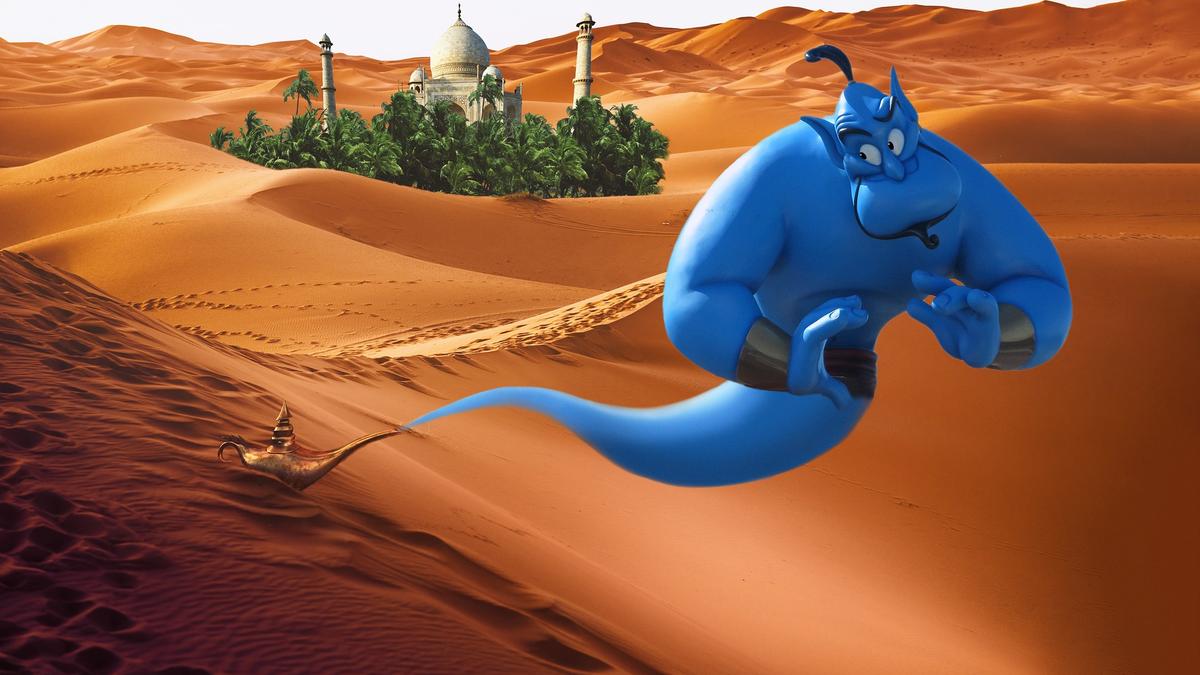
Why is the genie in Disney’s “Aladdin” blue?
The Hindu
From the rich traditions of Middle Eastern lore to the deliberate use of colour to convey narrative themes, the Genie’s blue hue is a masterstroke that contributes to the character’s enduring charm and significance. Let’s delve into the intriguing backstory behind this iconic colour choice.
Aladdin’s lovable Genie is undeniably one of Disney’s most iconic creations, forever etched in our hearts since his debut in the 1992 animated film. Voiced by the incomparable Robin Williams, this larger-than-life character has sparked endless imaginations. Many of us have pondered the fantastical scenario: what if we, like Aladdin, had a magical friend capable of granting our deepest desires? It’s a whimsical notion that taps into our wildest dreams and desires.
Yet, amidst all the enchantment, one aspect of the Genie’s persona stands out: his vibrant blue hue. But why blue?
The story of Aladdin, one of the most cherished tales from the collection One Thousand and One Nights ( commonly known as The Arabian Nights), has enchanted readers for centuries. This famous anthology of folk stories draws heavily from Middle Eastern and Indian literary traditions. Within these folk stories, genies, or Jinn, make frequent appearances in various forms. These mystical beings, described in the Qur’an as “created of a smokeless fire,” have roots that extend back to pre-Islamic times.
In Disney’s 1992 animated film “Aladdin,” the colour palette is more than just a visual treat; it’s a narrative tool. Blue, symbolising “good,” and red, representing “evil,” are deliberately used to set the tone of the story. Initially, the Genie was supposed to be purple, but the decision to make him blue was intentional. Eric Goldberg, the supervising animator for the Genie in the original movie, explained that the colours were chosen to subtly convey character traits even before the audience fully engaged with them. “The reds and the darks are the bad peoples’ colours,” Goldberg told Smithsonian magazine. “The blues and the turquoises and the aquas are the good peoples’ colours.”
The choice of blue for the Genie isn’t just an artistic whim. Talking about the same in an interview, Richard Vander Wende, the production designer who developed the film’s colour script, emphasised that blue carries profound symbolism. In Persian miniatures and tiled mosques, blue hues stand out brilliantly against the sun-bleached desert landscape, evoking water and sky. These elements symbolise life, freedom, and hope—qualities that are particularly poignant in a harsh desert environment.
Disney’s strategic use of colour goes beyond “Aladdin.” The animation studio often employs colour to underscore character traits and thematic elements. Characters dressed in crimson, like Jafar from “Aladdin,” and the Queen of Hearts, are typically associated with strength, energy, determination, and passion. On the other hand, blue denotes trust, loyalty, and confidence, as seen in characters like Alice, Genie and Jasmine. Through these deliberate colour choices, Disney creates a visual language that enhances the storytelling, making the characters and their journeys even more compelling.
According to Yale University ornithologist Richard Prum, the Genie’s blue colour is more than just an artistic choice; it’s rooted in science. Prum explains that the Genie’s blue hue is based on the same principle that makes the sky blue. Because the Genie is gaseous, the molecules in his body scatter light in a similar way to the molecules in the sky, giving him his distinct blue appearance. Prum further elaborates that the Genie’s blue colour is attributed to his “substanceless” nature, mirroring the phenomenon of light scattering in Earth’s atmosphere.











